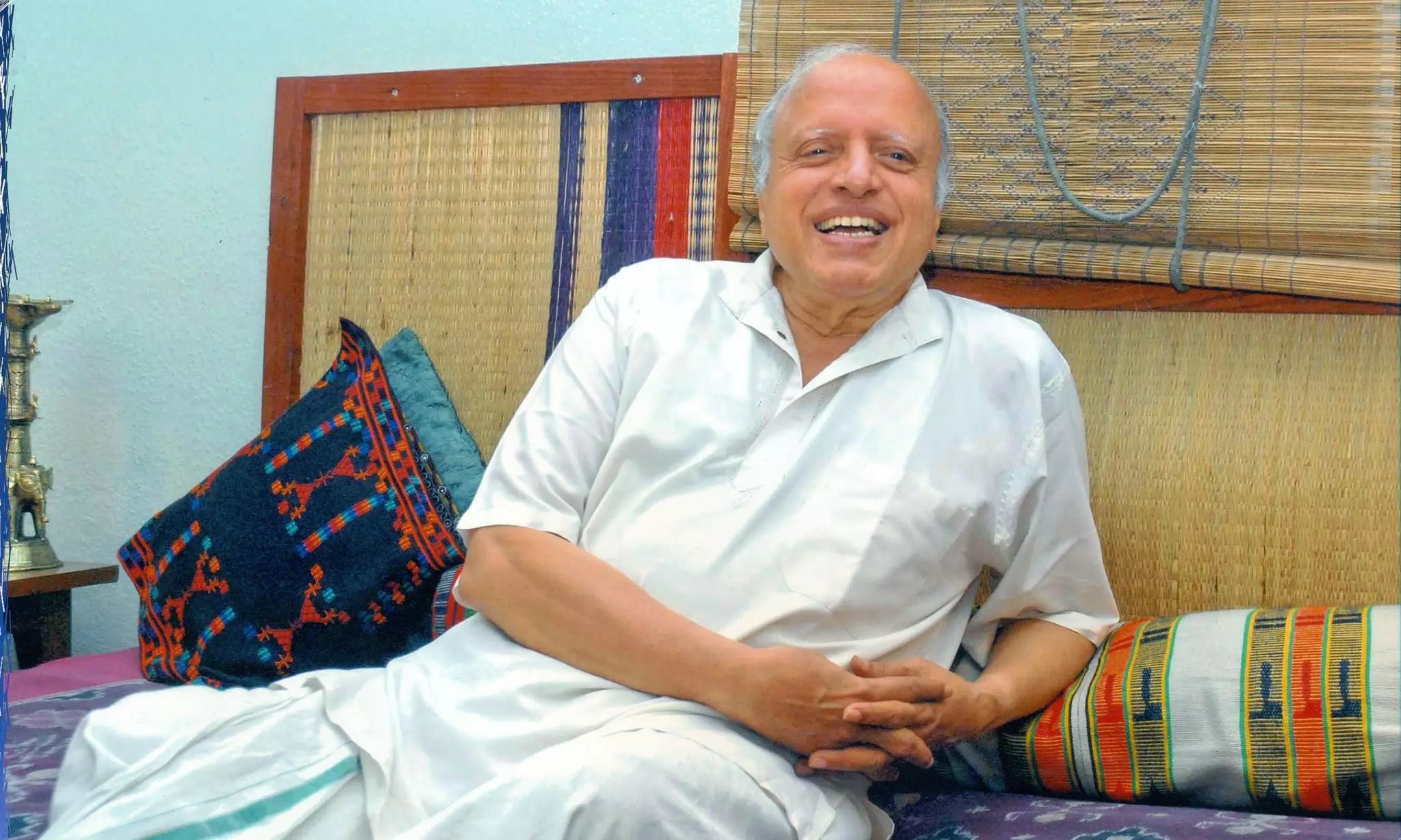
M S Swaminathan obituary: The genius who made India food secure
The renowned Indian agricultural scientist, who passed away in Chennai, played a crucial role in introducing high-yielding wheat and rice varieties, making India self-sufficient in cereals.

It is fashionable among the well-fed and the well-heeled to denounce the Green Revolution for ushering in groundwater extractive and earth-warming high-input, high-output chemical-based agriculture.
A former secretary in the Rajasthan government, who later headed the Small Farmer Agribusiness Consortium in Delhi, even asked rhetorically “were we not feeding people before the Green Revolution.” That person was not aware that in the 1960s, India was depending on food grain shipments from the United States under Public Law 480, which were also used to humiliate India for its stand on the American bombing of Vietnam.
The Green Revolution, which made India food secure, is a victim of its success, NITI Aayog Member Ramesh Chand said.
The Green Revolution
Mankombu Sambasivan Swaminthan, who passed away on Thursday, 21 days after his 98th birthday, helped usher Green Revolution in India. He did not himself develop the high-yielding wheat and rice varieties that made India self-sufficient in cereals. But he was prescient in noticing the potential of shorter-statured wheat and rice varieties, and overseeing the research teams that adapted them for the country.
Swaminathan got these insights while working briefly at the Central Rice Research Institute (CRRI, now National Institute of Rice Research) in Cuttack while engaged in the Indica-Japonica rice hybridisation programme in 1954 (which, tangentially gave us Mahsuri or Ponni rice). He realised that if traditional rice and wheat plants, which are tall and slender are to be high yielding, they would have to be able to bear the weight of grains and not wilt or ‘lodge.’ That was possible by shortening their height. Swaminathan’s attempts at creating short-statured mutations with chemicals and radiation did not work.
But when he joined Indian Agricultural Research Institute (IARI), a few months later, Swaminathan learnt of the work of Japanese wheat breeders. They had developed semi-dwarf varieties which gave more grains when given more water and fertiliser. The Americans had come across their work after the US occupation of Japan following the Second World War. A breeder at Washington State University had developed winter wheat by crossing Japan’s Norin-10. According to one version, Swaminathan got in touch with the breeder who in turn put him in touch with Norman E. Borlaug, the Father of the Green Revolution, who had developed high-yielding, semi-dwarf spring wheat in Mexico that was supposed to be suited for India.
Another version says that IARI was testing samples of the semi-dwarf seeds which the US Department of Agriculture had given. An agricultural scientist, M V Rao, noticed they could bear the weight of heavier grains and brought them to the notice of Swaminathan, the head of botany. Swaminathan got Borlaug to visit India. With the support of the dynamic agriculture minister C. Subramanian and the able secretary of agriculture B. Sivaraman, direct farmer trials were conducted in 150 fields. The minister even sowed the hybrid seed in the lawns of his bungalow in New Delhi. That’s how the Green Revolution began in India.
The Green Revolution in rice followed. It came via the International Rice Research Institute, Manila, which used the dwarfing gene in Taiwan’s Taichung (Native) 1, to developed IR-8, a high-yielding semi-dwarf rice variety that was introduced to India after IRRI released it in November 1966. Other IRRI breeders like Gurdev Khush developed better versions like IR36 and IR64 which also became immensely popular among Indian farmers.
Under Swaminathan’s guidance, an IARI team that comprised E.A Siddiq and V P Singh developed semi-dwarf basmati varieties. The first of them was Pusa Basmati-1 which took 24 years to develop. Though basmati fetched a high price in the export market, newly introduced common rice varieties had higher yield and were more profitable. Farmers in basmati growing areas of Punjab, Haryana and western Uttar Pradesh were shifting to common rice, Siddiq told me when I met him at his residence in Hyderabad in 2017. Pusa Basmati-1 reversed that trend. It doubled India’s basmati exports after its introduction in 1989. Pusa Basmati 1121, released in 2003, added to those gains. In 2022-23, India exported basmati worth $4.79 billion.
Not in favour of gene revolution
But for reasons that do not seem to be quite rational, Swaminathan did not warm up to the gene revolution. He did not favour genetic modification (GM) technology and even wrote an article in 2018 saying that genetically-modified Bt cotton (which, after its introduction in 2002 had made India a top exporter of the fibre, from being a net importer) was a failure. He was criticised for that article by the PM’s scientific advisor. Deepak Pental, who developed GM mustard, which the government approved for seed production last year, wrote a counter-article saying he was pandering to anti-science ideologues. Swaminathan is said to have prompted the 2010 moratorium on Bt brinjal (which endures, while Bangladesh cultivates it).
Farmers who want minimum support prices (MSP) guaranteed by law love Swaminathan for another reason. As chairman of the National Commission for Farmers (2004-06), he said that MSP should be 50 percent more than the weight average cost of cultivation. In 2018, the Prime Minister announced that MSP would give a 50 percent profit. The Commission for Agricultural Costs and Prices has made that a principle in its annual recommendations since then.
Swaminathan received many awards, including the first World Food Prize in 1987. He was much decorated. Some senior agricultural scientists say he desired the Nobel Prize. But the accolade that matters the most is the alleviation of mass hunger. For that, and for the agricultural prosperity that the Green Revolution caused, he will be long remembered.

